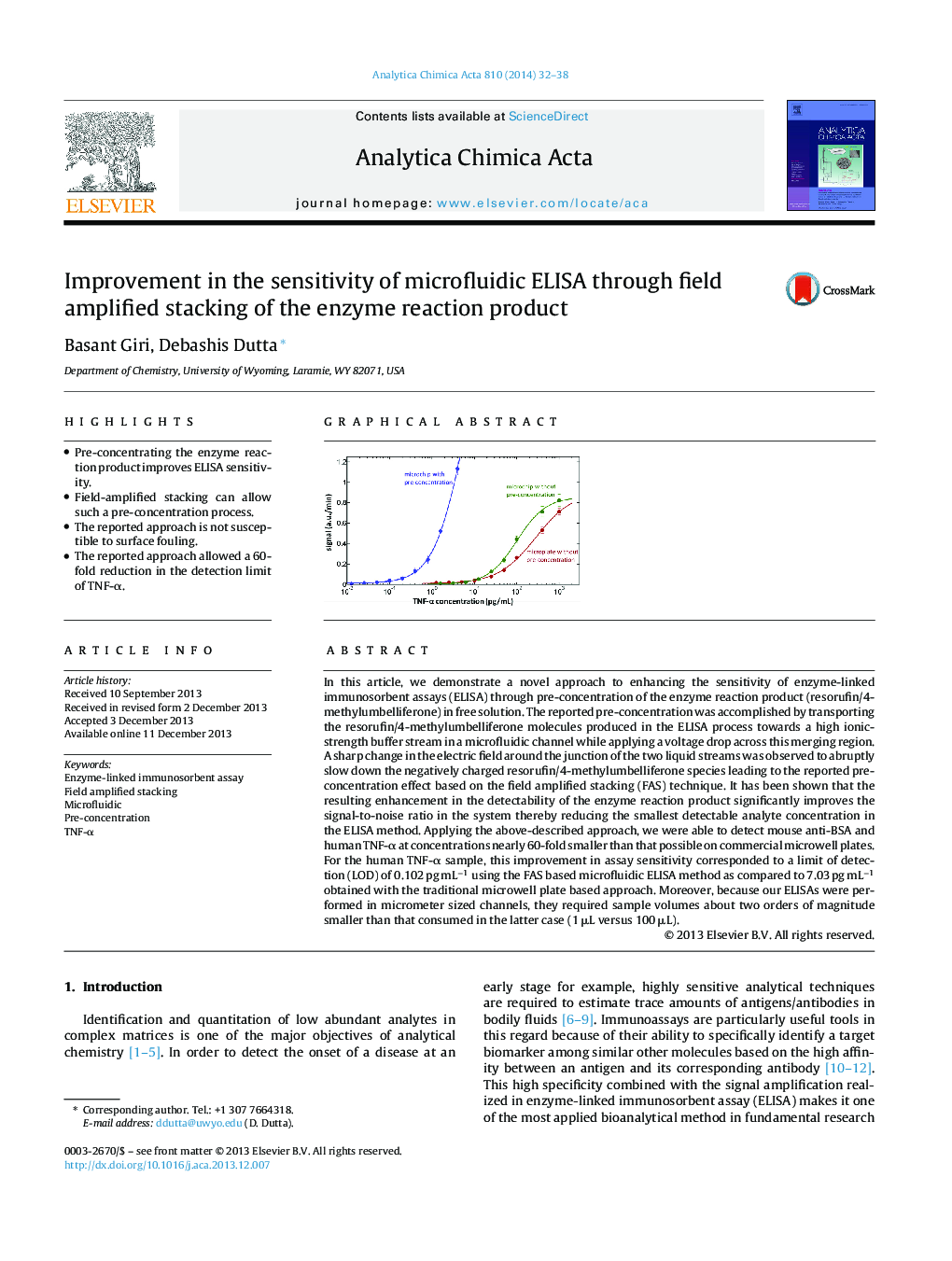| کد مقاله | کد نشریه | سال انتشار | مقاله انگلیسی | نسخه تمام متن |
|---|---|---|---|---|
| 1164227 | 1491022 | 2014 | 7 صفحه PDF | دانلود رایگان |

• Pre-concentrating the enzyme reaction product improves ELISA sensitivity.
• Field-amplified stacking can allow such a pre-concentration process.
• The reported approach is not susceptible to surface fouling.
• The reported approach allowed a 60-fold reduction in the detection limit of TNF-α.
In this article, we demonstrate a novel approach to enhancing the sensitivity of enzyme-linked immunosorbent assays (ELISA) through pre-concentration of the enzyme reaction product (resorufin/4-methylumbelliferone) in free solution. The reported pre-concentration was accomplished by transporting the resorufin/4-methylumbelliferone molecules produced in the ELISA process towards a high ionic-strength buffer stream in a microfluidic channel while applying a voltage drop across this merging region. A sharp change in the electric field around the junction of the two liquid streams was observed to abruptly slow down the negatively charged resorufin/4-methylumbelliferone species leading to the reported pre-concentration effect based on the field amplified stacking (FAS) technique. It has been shown that the resulting enhancement in the detectability of the enzyme reaction product significantly improves the signal-to-noise ratio in the system thereby reducing the smallest detectable analyte concentration in the ELISA method. Applying the above-described approach, we were able to detect mouse anti-BSA and human TNF-α at concentrations nearly 60-fold smaller than that possible on commercial microwell plates. For the human TNF-α sample, this improvement in assay sensitivity corresponded to a limit of detection (LOD) of 0.102 pg mL−1 using the FAS based microfluidic ELISA method as compared to 7.03 pg mL−1 obtained with the traditional microwell plate based approach. Moreover, because our ELISAs were performed in micrometer sized channels, they required sample volumes about two orders of magnitude smaller than that consumed in the latter case (1 μL versus 100 μL).
Figure optionsDownload as PowerPoint slide
Journal: Analytica Chimica Acta - Volume 810, 31 January 2014, Pages 32–38